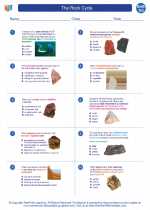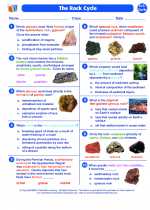Oxides
An oxide is a chemical compound that contains at least one oxygen atom and one other element. Oxides are widely abundant in nature and play important roles in various chemical and geological processes. In this study guide, we will explore the different types of oxides, their properties, and their significance in Earth Science.
Types of Oxides
Oxides can be classified into several categories based on the elements they combine with and their chemical properties:
1. Metal Oxides
These oxides are formed when a metal reacts with oxygen. They are typically basic in nature and can react with acids to form salts and water.
2. Non-Metal Oxides
Non-metal oxides are compounds of oxygen with elements from the right side of the periodic table. They tend to be acidic in nature and can react with bases to form salts and water.
3. Mixed Oxides
Some oxides contain both metal and non-metal elements. These oxides exhibit a range of properties and may have acidic, basic, or amphoteric behavior.
Properties of Oxides
The properties of oxides vary depending on the elements involved and their chemical structure. However, there are some general characteristics that can be attributed to oxides:
- Many oxides are solid at room temperature, but some can be liquids or gases.
- They often have high melting and boiling points.
- Some oxides are soluble in water, while others are insoluble.
- They can exhibit acidic, basic, or amphoteric behavior.
Significance in Earth Science
Oxides are ubiquitous in the Earth's crust and have significant impacts on geological processes and environmental conditions. Some important ways in which oxides are relevant to Earth Science include:
- Formation of metal ores: Many metal oxides are important components of mineral ores, which are essential for industrial processes and the production of metals.
- Weathering and erosion: Oxidation of minerals in rocks and soils can lead to weathering and erosion, influencing the Earth's surface and landscape formation.
- Environmental effects: Certain oxides, such as carbon dioxide (CO2) and sulfur dioxide (SO2), play crucial roles in the Earth's atmosphere and contribute to climate change and air pollution.
Study Guide Questions
- What are the different types of oxides and their chemical properties?
- Describe the general properties of oxides and how they vary based on their composition.
- Explain the significance of oxides in Earth Science, providing examples of their roles in geological processes and environmental impact.
◂Earth Science Worksheets and Study Guides High School. The Rock Cycle

 Worksheet/Answer key
Worksheet/Answer key
 Worksheet/Answer key
Worksheet/Answer key
 Worksheet/Answer key
Worksheet/Answer key
 Vocabulary/Answer key
Vocabulary/Answer key
 Vocabulary/Answer key
Vocabulary/Answer key
 Vocabulary/Answer key
Vocabulary/Answer key
